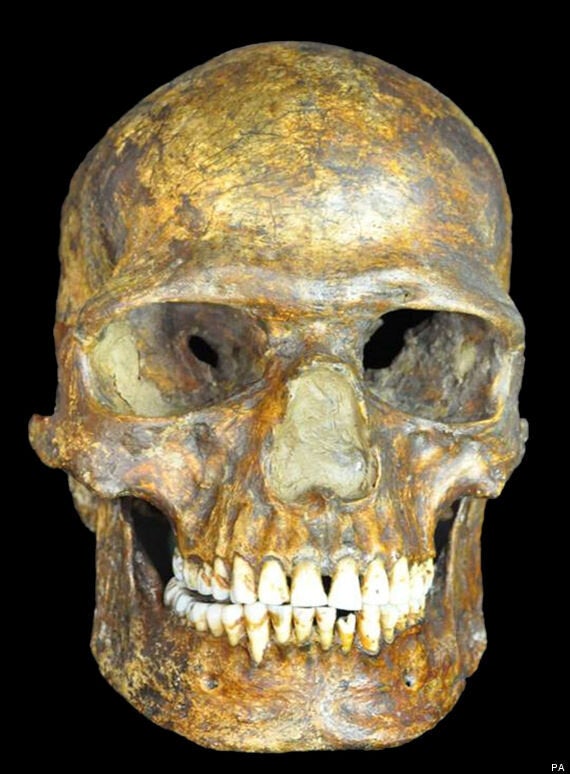A genome taken from a 36,000-year-old skeleton has helped scientists shed new light on interbreeding between humans and Neanderthals. The ground-breaking study of DNA recovered from a fossil of one of the earliest known Europeans - a man who lived in western Russia - shows that the genetics of the earliest inhabitants of the continent survived the last ice age, helping form the basis of the modern-day population.
Known as the Kostenki genome, the DNA also contained evidence the man shared, as with all people of Eurasia today, a small percentage of Neanderthal genes, confirming previous findings which show a period when Neanderthals and the first humans to leave Africa for Europe briefly interbred.
This means that, even today, anyone with a Eurasian ancestry - from Chinese to Scandinavian and North American - has a small element of Neanderthal DNA. But despite Western Eurasians going on to share the European landmass with Neanderthals for another 10,000 years, no further periods of interbreeding occurred, the study said.
Robert Foley, a University of Cambridge professor, said: "Were Neanderthal populations dwindling very fast? Did modern humans still encounter them? We were originally surprised to discover there had been interbreeding. Now the question is, why so little? It's an extraordinary finding that we don't understand yet."

The Ancient skull from which the genome was taken that helped scientists shed new light on interbreeding between humans and Neanderthals
Lead author Eske Willerslev said the work revealed the complex web of population relationships in the past, generating for the first time a firm framework with which to explore how humans responded to climate change, encounters with other populations, and the dynamic landscapes of the ice age.
Led by the Centre for GeoGenetics at the University of Copenhagen, the study was conducted by an international team of researchers from institutions including the University of Cambridge's departments of archaeology and anthropology, and zoology.
Scientists now believe Eurasians separated into at least three populations earlier than 36,000 years ago. Western Eurasians, East Asians and a mystery third lineage, all of whose descendants would develop the unique features of most non-African peoples - but not before some interbreeding with Neanderthals took place.
The new study allows scientists to closer estimate this as occurring around 54,000 years ago, before the Eurasian population began to separate. By cross-referencing the ancient man's complete genome - the second oldest modern human genome ever sequenced - with previous research, the team discovered a surprising unity running from the first modern humans in Europe, suggesting that a "meta-population" of hunter-gatherers with deep shared ancestry managed to survive through the last ice age and colonise the landmass of Europe for more than 30,000 years.
While the communities within this population expanded, mixed and fragmented, this was a "reshuffling of the same genetic deck", researchers said. European populations as a whole maintained the same genetic thread from their earliest establishment out of Africa until Middle Eastern populations arrived in the last 8,000 years, bringing with them agriculture and lighter skin colour.
Marta Mirazon Lahr, from Cambridge University's Leverhulme Centre for Human Evolutionary Studies, said: "That there was continuity from the earliest Upper Palaeolithic to the Mesolithic, across a major glaciation, is a great insight into the evolutionary processes underlying human success.
"For 30,000 years, ice sheets came and went, at one point covering two-thirds of Europe. Old cultures died and new ones emerged - such as the Aurignacian and the Grevettian - over thousands of years, and the hunter-gatherer populations ebbed and flowed. But we now know that no new sets of genes are coming in: these changes in survival and cultural kit are overlaid on the same biological background.
"It is only when farmers from the Near East arrived about 8,000 years ago that the structure of the European population changed significantly."